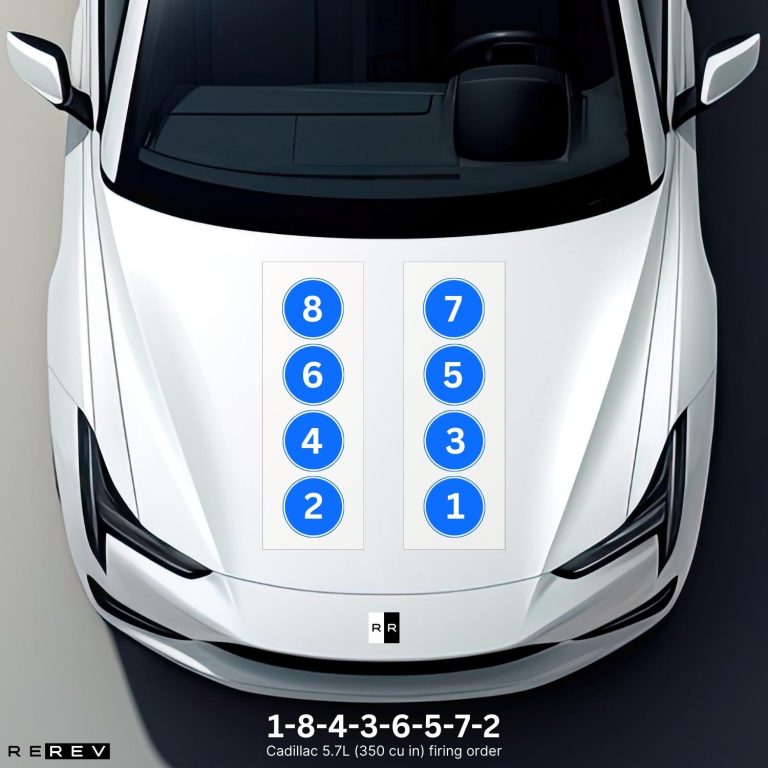Cadillac 5.7L (350 cu in) firing order — diagram & guide
Mastering engine efficiency with the Cadillac 5.7L firing order.

When you say Cadillac, you instantly think about the small block V8 engines made by the brand. And while that’s the case with the company’s 5.7-liter engine, there’s a newer version of it which just makes things worse for drivers.
We say it since we already had a chance to see how confusing the Cadillac 5.7L (350 cu in) firing order can be to some drivers. That’s why we’ll do our best to clear it up for you in this guide as we go through both the old 350 engine’s firing order and the newer LS6.
Cadillac 5.7L firing order
To start things off, let’s first state that the Cadillac 5.7L firing order is 1-8-4-3-6-5-7-2, and this is for the engine produced in the late 80s and the early 90s. The Brougham engine is a perfect example of such firing order and it can be used for most of the brand’s V8s of that time.
However, there’s also a more recent V8 of the same capacity, and that one has a different firing order. So, if you own a mid-2000s performance vehicle by Cadillac, you’ll want to skip to the next section instead.
Cadillac 5.7L LS6 firing order
Now that we’ve cleared that up for the older engine, it’s crucial to say that the Cadillac 5.7L LS6 firing order is 1-8-7-2-6-5-4-3. As you can see, it’s a completely different sequence from the Brougham engine and it’s used in high-performance Cadillac models.
With that in mind, it’s easy to differentiate between the two because of the time difference in making these engines.
Cadillac 5.7L cylinder diagram

The next thing you’ll need to know is the cylinder arrangement of this engine. You’ll need it in case of using the firing order to check up on the plugs and coils. Luckily, both these engines we’ve discussed use the same cylinder pattern.
The left-side cylinder bank houses cylinders 2, 4, 6, and 8 (passenger’s side), while the right side includes cylinders 1, 3, 5, and 7 (driver’s side).
This makes it easy to apply the firing order as now you’ll know where to start, and the first cylinder is the front-most one near the crank pulley on the driver’s side.
Cadillac 5.7L vehicle applications
The only thing that’s left for us to discuss at this point after comparing the firing orders of both these engines is the vehicle application for both. While the original 350 engine was used in the Cadillac Brougham, the newer one is used in the CTS-V.
It’s a high-performance model and also the only one that got the new 5.7-liter V8 LS6 under the hood, so this should easily help you differentiate between the two.
Our take
Ultimately, we hope that this guide sets you on the right track when it comes to properly using the Cadillac 5.7L firing order. While the engine is more than reliable on its own, taking proper care and time to check up on the cylinders and plugs or coils gets way easier once you know the firing sequence.